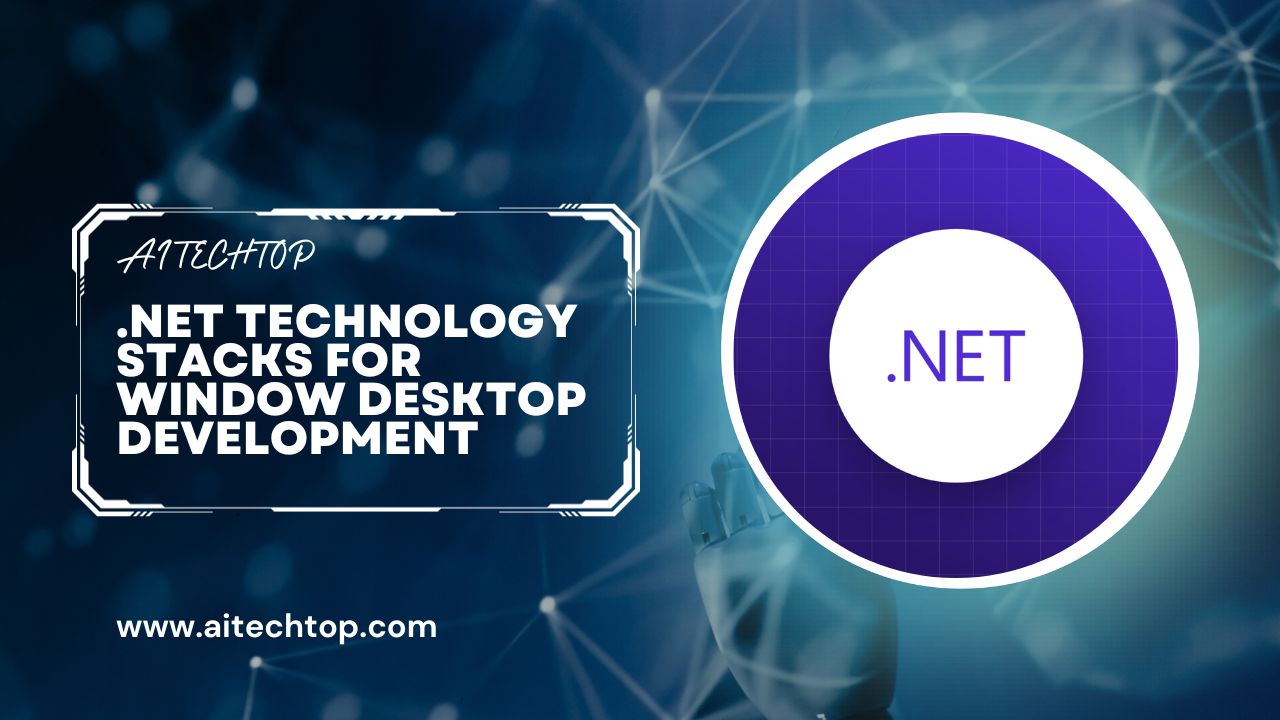When you’re in the business of creating Windows desktop applications, you want the best tools to help you succeed. That’s where the .NET technology stack comes into play. But with several options to choose from, it can be a bit overwhelming. Don’t worry; we’re here to break it down for you in simple terms.
Top .NET development trends you need know
Understanding .NET Technology Stacks
Before we dive into the details, let’s get a quick understanding of what .NET technology stacks are. They are like toolsets that developers use to build Windows desktop applications. Each stack has its own set of features and strengths, making them suitable for different types of projects.
The Popular .NET Technology Stacks
Here are some of the most popular .NET technology stacks for Windows desktop development:
1. WinForms
What is it? WinForms has been around since 2002, making it one of the elder statesmen of desktop development. It’s a good choice for creating straightforward desktop applications.
In simple terms: WinForms is like building with Lego blocks. You can create basic desktop applications quickly.
2. Windows Presentation Foundation (WPF)
What is it? WPF arrived in 2006, offering more power and flexibility than WinForms. It’s your go-to option for creating complex desktop apps with fancy interfaces.
In simple terms: WPF is like crafting a custom piece of furniture. It takes more time, but you get something impressive.
3. Universal Windows Platform (UWP)
What is it? UWP is Microsoft’s cross-platform solution introduced in 2015. It’s a good choice if you want your desktop app to run on different Windows devices.
In simple terms: UWP is like making a versatile tool that works in various situations.
4. Electron (.NET)
What is it? Electron allows you to build desktop applications using web technologies. Electron (.NET) is a way to do this with C#.
In simple terms: Electron (.NET) is like creating a desktop app with the languages of the web. It’s excellent for quick, cross-platform projects.
5. Avalonia
What is it? Avalonia is a cross-platform XAML framework for .NET. It’s versatile, working with different .NET flavors.
In simple terms: Avalonia is like having a universal remote for your TV, DVD player, and sound system. It works everywhere.
Choosing the Right Stack
So, how do you pick the right stack for your project? Here are some factors to consider:
1. Complexity of Your App
If your app is a simple one with basic features, WinForms can get the job done quickly. But for complex apps with lots of bells and whistles, WPF might be the better choice.
2. Cross-Platform Needs
If your app needs to run on various Windows devices or even on different operating systems, UWP and Electron (.NET) are your friends. They offer cross-platform capabilities.
3. Learning Curve
Consider your familiarity with the technology stack. WinForms is the easiest to learn and use, while WPF, UWP, and Electron (.NET) may require a bit more time to master.
4. Performance
For high-performance requirements, both WinForms and WPF are solid choices. However, Electron (.NET) and UWP, while good for many scenarios, may not match their performance in some cases.
5. Community and Support
WinForms and WPF have large and active communities. UWP and Electron (.NET) have smaller communities but are growing steadily. Having a supportive community can be a lifesaver when you run into problems.
In Conclusion: .NET technology stacks for window desktop development
Choosing the right .NET technology stack for Windows desktop development doesn’t have to be a headache. For simple, quick projects, consider WinForms. If your app is more complex and needs a stylish interface, WPF is your best bet. When you want to go cross-platform, think about UWP and Electron (.NET). And if you’re looking for a versatile, cross-platform solution with a modern look, Avalonia might be the way to go.
What is web development, and why does it matter?
Answer: Web development is the process of creating and maintaining websites or web applications. It involves writing code to design, build, and optimize websites, making them functional and visually appealing. Web development is important because it enables businesses and individuals to establish an online presence, reach a global audience, and provide information or services through the internet.
What sets front-end and back-end web development apart?
Answer: Front-end web development deals with the visible elements of a website that users interact with, such as layout, design, and user interface. It primarily uses HTML, CSS, and JavaScript. Back-end web development focuses on the behind-the-scenes work, managing databases, server-side logic, and data processing. It often uses server-side languages and frameworks. Both front-end and back-end development work together to create a complete web application.
What is responsive web design, and why is it crucial?
Answer: Responsive web design is an approach to design and development that ensures a website’s layout and content adjust dynamically to fit various screen sizes and devices. This is crucial because it allows a website to provide an optimal user experience on smartphones, tablets, desktops, and other devices. It improves accessibility, user engagement, and SEO rankings.
